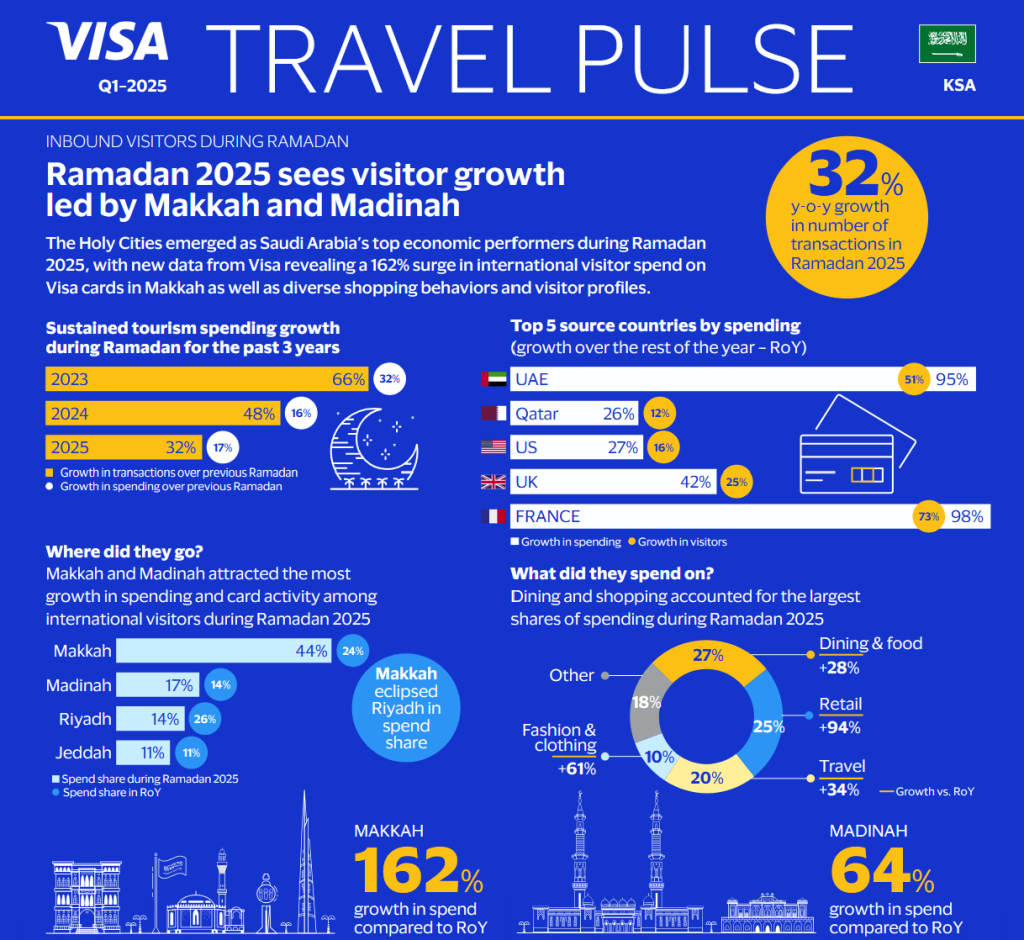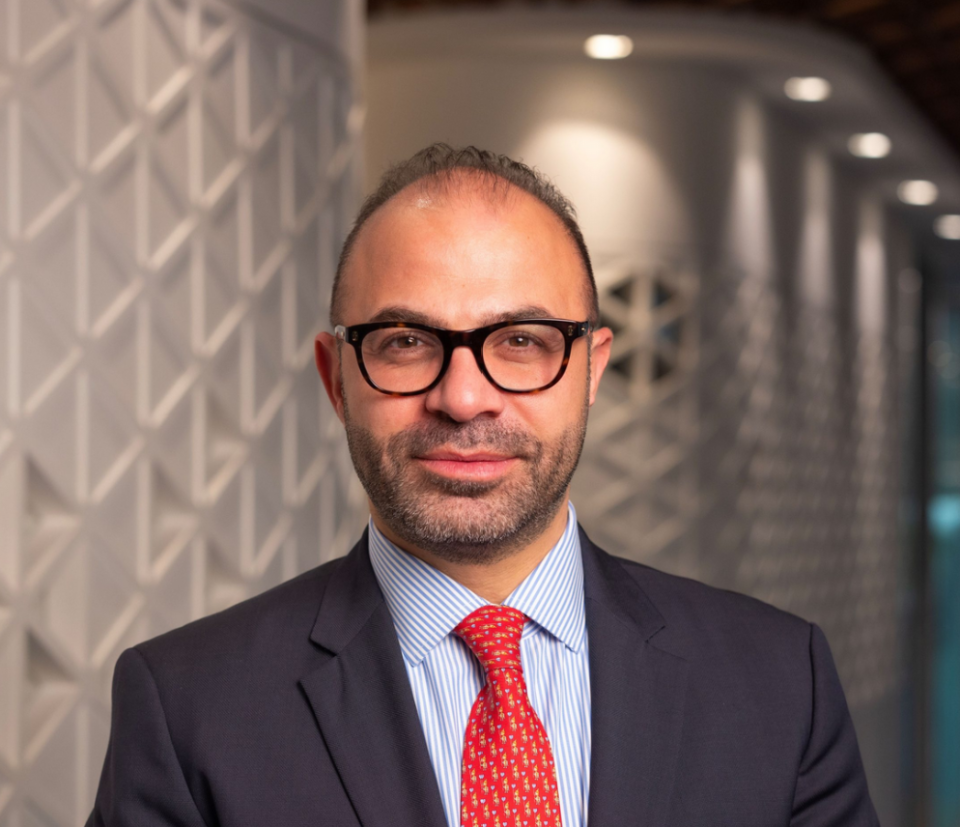The holy cities of Makkah and Madinah have emerged as the top economic performers during Ramadan, according to Visa’s Travel Pulse Q1 2025 report.
The data reveals a staggering 162% surge in visitor spend on Visa cards in Makkah during the holy month, with average spend per visitor rising to US $449, up from US $356 during the rest of the year. Madinah also witnessed a significant 64% increase in visitor spend, underscoring the cities’ enduring appeal to religious travellers.

The report highlights the growing importance of religious tourism in supporting Saudi Arabia’s non-oil economy, a key pillar of the Kingdom’s Vision 2030. The data shows that 48% of Ramadan visitors came from the Gulf Cooperation Council (GCC) region, with the United Arab Emirates leading the charge. Visitors from the UAE saw a 51% rise in numbers and a 95% increase in spend, while Qatar registered a 12% rise in visitors and a 26% increase in spend.
In terms of spending patterns, dining, retail, and fashion emerged as the top categories, with activity peaking after Iftar as visitors flocked to malls and restaurants. The second half of Ramadan saw higher transaction volumes, leading into Eid.

According to Ali Bailoun, Visa’s Regional General Manager for Saudi Arabia, Bahrain, and Oman, “Beyond their religious significance, Makkah and Madinah are also engines of economic growth.” He added that merchants in Saudi Arabia have a real opportunity to reimagine how they engage with religious travellers by extending hours during peak post-iftar times, embracing digital payments, and curating offerings that resonate with GCC and emerging market visitors.
The report highlights the significance of Saudi Arabia’s holy cities in the country’s economic landscape, particularly in the context of its Vision 2030 goals. Its findings suggest that the economic activity generated by visitors to these cities during Ramadan could inform strategies for future development and growth.
Why it matters: By understanding visitor behaviour and spending patterns, stakeholders can identify opportunities to enhance the visitor experience and support local businesses.



